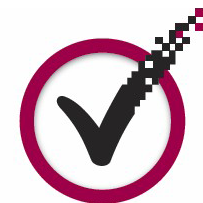Protective Effect of Bryophyllum pinnatum Extracts Against Carbon Tetrachloride (CCl4) Induced Toxicity in Male Wistar Rats
| Received 12 Dec, 2024 |
Accepted 21 Jan, 2025 |
Published 30 Jun, 2025 |
Background and Objective: Bryophyllum pinnatum is used for remedy of jaundice, hypertension, renal stones, and diabetes. This study estimated the protective potential of ethanol leaf extract of Bryophyllum pinnatum against CCl4-induced biochemical injury in Wistar albino rats using serum biochemical parameters. Materials and Methods: The study evaluated the antioxidant and hepatoprotective effects of Bryophyllum pinnatum leaves. Ethanol and aqueous extracts were prepared and screened for phytochemicals. Antioxidant activities were assessed using DPPH, FRAP, and phosphomolybdenum assays. Thirty male Wistar rats were grouped, induced with carbon tetrachloride (CCl4), and treated with extracts. Histopathological analysis and statistical evaluations demonstrated significant antioxidant and hepatoprotective properties of the extracts (p<0.05). Results: It was observed that there was a significant (p<0.05) increase in the AST, ALT, ALP, conjugated bilirubin, and total bilirubin in serum levels of the rats administered with CCl4 group compared to the negative control group. However, pre-treatment of rats with ethanol extract of B. pinnatum significantly (p<0.05) decreased these biochemical parameters compared to the positive control group. In addition, B. pinnatumextract significantly modulated hematological parameters in the CCl4-induced toxicity in the rats administered with the extract though the 500 mg/kg body weight group was the most potent. The liver histopathological screening showed severe diffuse vacuolar degeneration and necrosis of hepatocytes in the induced group when compared to the negative control but was reversed after treatment with the extract. Conclusion: The results obtained from this study showed that the ethanol leaf extract of B. pinnatum has a protective effect against CCl4-induced hepatic damage which might be due to the presence of phytochemical and antioxidant compounds.
How to Cite this paper?
APA-7 Style
Adegboyega,
A., Olalude,
C., Ganiyu,
I., Ayoade,
J., Akinnibosun,
B., Olatunji,
O. (2025). Protective Effect of Bryophyllum pinnatum Extracts Against Carbon Tetrachloride (CCl4) Induced Toxicity in Male Wistar Rats. Asian Journal of Biological Sciences, 18(2), 500-509. https://doi.org/10.3923/ajbs.2025.500.509
ACS Style
Adegboyega,
A.; Olalude,
C.; Ganiyu,
I.; Ayoade,
J.; Akinnibosun,
B.; Olatunji,
O. Protective Effect of Bryophyllum pinnatum Extracts Against Carbon Tetrachloride (CCl4) Induced Toxicity in Male Wistar Rats. Asian J. Biol. Sci 2025, 18, 500-509. https://doi.org/10.3923/ajbs.2025.500.509
AMA Style
Adegboyega
A, Olalude
C, Ganiyu
I, Ayoade
J, Akinnibosun
B, Olatunji
O. Protective Effect of Bryophyllum pinnatum Extracts Against Carbon Tetrachloride (CCl4) Induced Toxicity in Male Wistar Rats. Asian Journal of Biological Sciences. 2025; 18(2): 500-509. https://doi.org/10.3923/ajbs.2025.500.509
Chicago/Turabian Style
Adegboyega, A.M., C.B. Olalude, I.G. Ganiyu, J.B. Ayoade, B.B. Akinnibosun, and O.M. Olatunji.
2025. "Protective Effect of Bryophyllum pinnatum Extracts Against Carbon Tetrachloride (CCl4) Induced Toxicity in Male Wistar Rats" Asian Journal of Biological Sciences 18, no. 2: 500-509. https://doi.org/10.3923/ajbs.2025.500.509

This work is licensed under a Creative Commons Attribution 4.0 International License.



